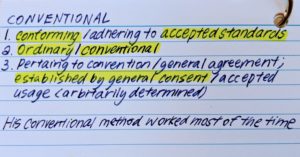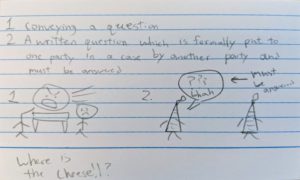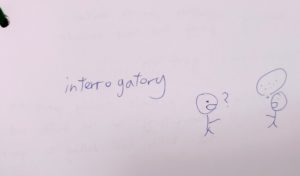A Systematic Approach to Building Vocabulary for Standardized Tests
By Najeeb Sheikh
(Published on 13 August 2021)

The word for a beverage steeped from the leaves of Camellia sinensis is named some variation of “tea” in dozens of languages, or some variation of “cha” in dozens of others. Click below to see how to say “tea” in over 60 languages:
Is it a coincidence that many of the major languages have variations of just two different words for tea? No! Each word has its origin in a different Chinese language, as tea was first discovered in China, and then travelled to the rest of the world by traders. Learning the origin of how “tea” is said in your language can teach you about history, trade, and cultures.
Deliberate vocabulary-building is not an easy task, especially when needed to be done in short order for the purpose of taking standardized tests that directly or indirectly test knowledge of difficult words. Among US standardized test that test vocabulary, the most well-known are the SSAT and ISEE, for admission into private K-12 schools, and the GRE, for admission into graduate schools.
While a richer English vocabulary will help you get a higher score on the relevant sections of said tests, it also opens other doors, especially when combined with word origins and word parts, leading to a greater understanding of human diversity, cultures, literature, history, linguistics, arts, gastronomy, sciences, and business. Increasing your English vocabulary could even lead to a deeper understanding of your native language!
Picking up a pre-made list of words with meanings and memorizing it by brute force is far from the most optimal method for improving vocabulary, especially if deeper understanding and retention are important! Here I will lay out a systematic approach–tried and tested by many of my students–for building vocabulary that can be used by anybody of any age for any purpose, and it can also be adapted for building vocabulary in other languages. You will need the following equipment and resources before you can start:
Flashcards, a printed word list for your specific purpose, pen/highlighter, and a dictionary (app/online).

Steps for Building Vocabulary
- Go through the first column of words on the list, highlight/underline the ones you don’t know, and divide them into groups of however many you can sustainably do every day, typically 5-10.
- Look up the first word in the dictionary, and read the part of speech, meaning(s), synonyms, example sentences, and word origin.
- On the front of a flash card, write down the word, and on the back the top 2 meanings with part of speech, and then make your own sentences that make the meaning(s) of the word clear. It is imperative that you write your own sentences and not simply copy the ones in the dictionary. Forcing yourself to make a sentence that makes the meaning clear to someone who doesn’t know the word is what will lead to greater understanding and retention. Hand-writing, as opposed to typing, is an important part of this as well. Finally, put down the synonyms, either on the front, or the back; if you wish, write the word origin also! Repeat this step for the number of flash cards that you have decided to do daily.
- Try to do the previous step as early in the day as possible. Later in the day, review the flashcards that you made on the day, as well as all or most of the previous cards to ensure retention. EVERY. SINGLE. DAY. That’s why it is important to not be overambitious at the beginning by planning to do, say, 15 cards daily, and then burning out after the first week or so. Remember, it has to be a daily practice, rather than doing all of a week’s words on the weekend only. Making the flashcards is an involved, intellectual process and takes anywhere from 15 minutes to 45 minutes depending the student’s age and number of words.
- The next day, go to step 1 and repeat.


Why is this strategy better than using pre-made lists with meanings?
There are several reasons. Looking up the meanings yourself leads to greater understanding and retention, hand-writing the flashcards creates and strengthens neural pathways involved in learning, and creating your own sentences makes you understand the word and its nuances better as you are forced to engage with the word in a meaningful context rather than simply memorizing a word in vacuum. If your word list(s) also have meanings, you should still write down the meanings on your own flashcards, and you might still need to use a dictionary for the other information. You may also choose to draw a stick-figure picture as a mnemonic on the front or back of a card if you can quickly think of an easy picture and are inclined towards drawing. Some of my students do draw pictures for some of the words. Examples of recent flashcards from several of my students can be seen at the bottom, as well links to word lists for the SSAT.
Needless to say, if you find yourself with more free time on some days, do go through the prepared flashcards more than just once in a day, especially the ones you find yourself forgetting, which you should separate out from the main deck. Shuffle them up to test yourself, or group the flashcards by related words (same part of speech, synonyms, antonyms, same prefixes, roots, or suffixes, or related in any other way). This will lead to an even greater understanding because instead of unrelated words on a list, you will start to develop and see connections between words, and they will become a word web in your mind, enhancing learning and retention even further.
There are other, more advanced vocabulary-building techniques also, but the method above is the core strategy and, in my experience, must be followed for optimal performance on standardized test sections that test vocabulary, especially the Verbal Section on the SSAT. Keep an eye out for part 2 of this blog for some advanced techniques to supercharge your vocabulary-building journey!
Examples of recent flashcards from several of my students can be seen on the right, as well as links to word lists for the SSAT at the bottom.



SSAT Word Lists:
Source 1 Source 2 Source 3 Source 4
Najeeb’s teaching style is dynamic, engaging, fun, exploratory/intuitive, geared towards student self-discovery, and adaptable to various learning speeds and styles. Sign up a trial lesson with Najeeb!
About The Edge
The Edge Learning Center is Hong Kong’s premier Test Preparation, Academic Tutoring, and Admissions Consulting services provider. Founded in 2008, The Edge has helped thousands of students improve their ACT and SAT scores as well as their IB and AP grades. The AC team has just finished off another successful period in which students gained acceptance to schools such as Columbia, Yale, UChicago, and more! Check out our latest Admissions Results!

